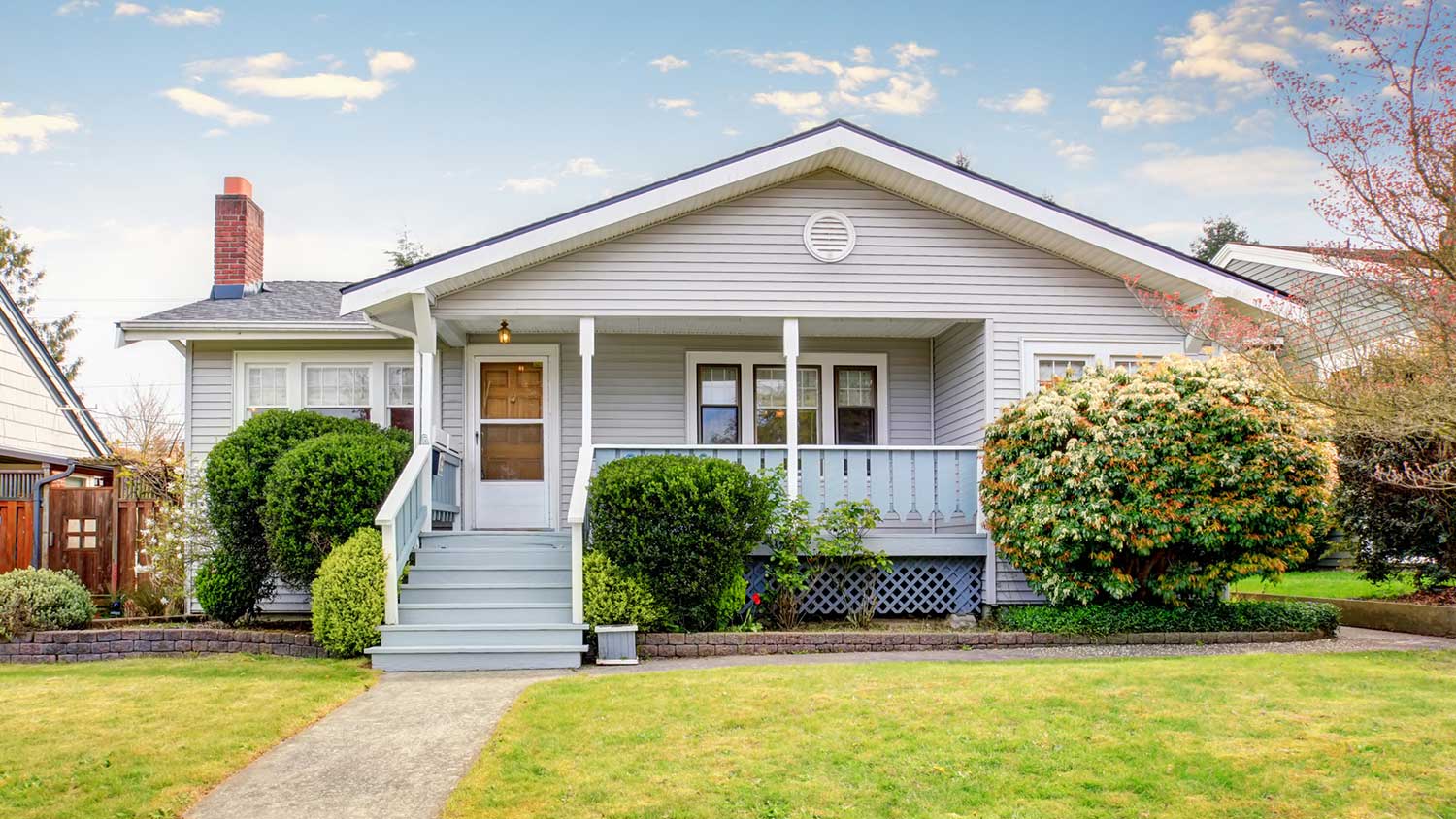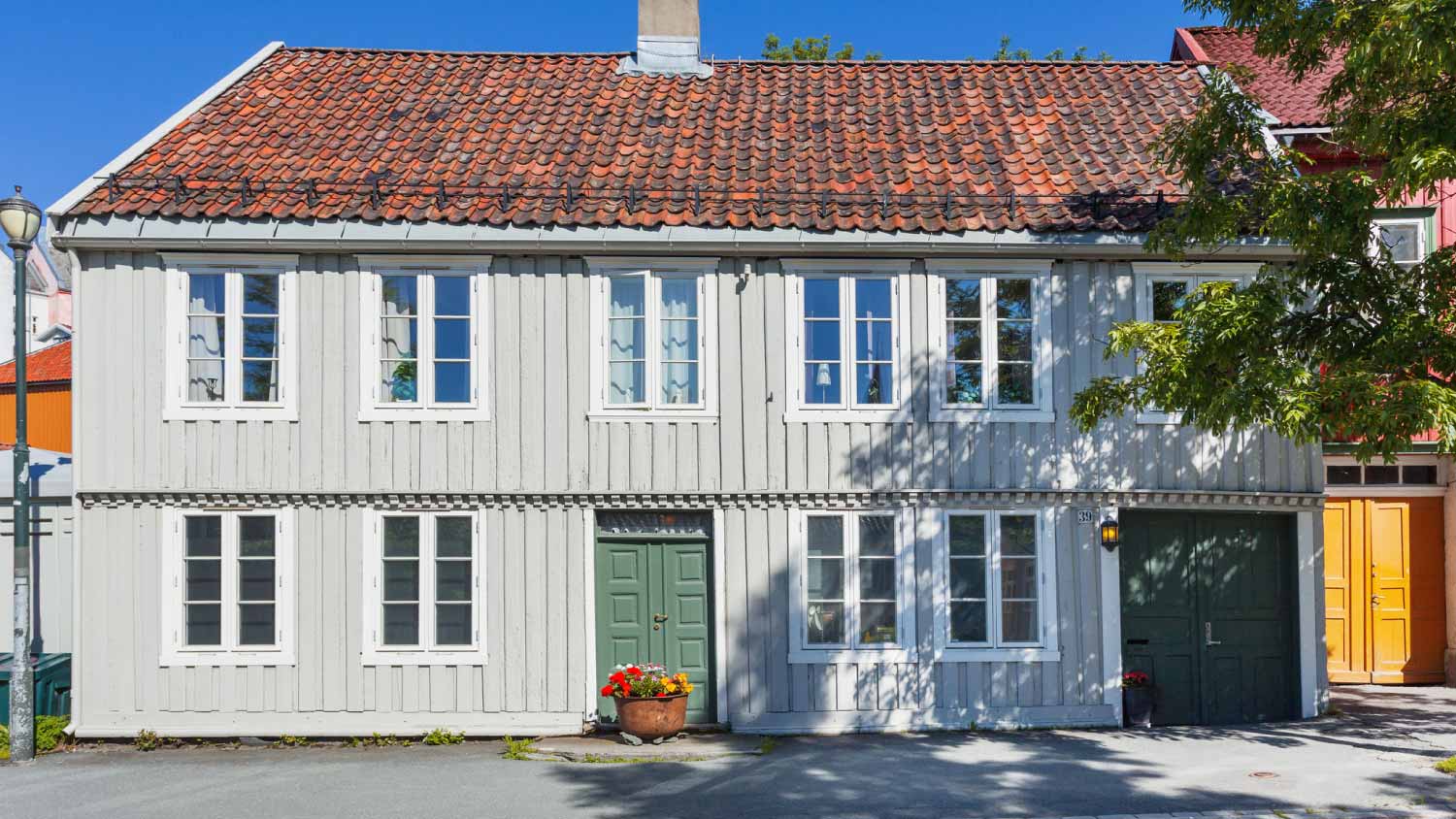
Discover the cost to install exterior trim. Learn about price factors, labor, materials, and ways to save on your exterior trim installation project.
Vinyl siding costs $12,238 on average, but it ranges between $6,365 and $18,296 depending on your home’s size and other factors.


Vinyl siding installation costs an average of $3 to $12 per square foot.
The type of siding, your home’s size and complexity, and your location will affect the cost of vinyl siding.
Vinyl siding offers a return on investment (ROI) of around 80%.
It has been around since the 1950s and is the most popular siding choice for homeowners.
Installing vinyl siding costs $12,238 on average, with most homeowners paying between $6,365 and $18,296 depending on the home’s size, location, and other factors. Siding upgrades increase a home's energy efficiency, curb appeal, and resale value. Vinyl is a great choice if you’re looking for affordable siding material, but you may want to consider investing in a more durable vinyl siding alternative if doing so is within budget.
Vinyl siding costs $3 to $12 per square foot, but the price depends on the type of siding and where you live. Vinyl siding is affordable to manufacture and easy to install, making it one of the least expensive siding options. What’s more, it’s lightweight and comes in over 350 color choices
Here’s what you might pay for vinyl siding based on the square footage of your home:
| Home Size per Sq. Ft. | Average Cost Range |
|---|---|
| 2,500 | $4,000–$20,000 |
| 5,000 | $10,000–$50,000 |
| 8,000 | $16,000–$80,000 |
Vinyl siding materials have advanced over the years, now including many decorative styles, siding colors, and even insulation to help lower energy costs. Whatever you choose, vinyl siding can be customized to your home’s features and your personal preferences. Here’s how the type of vinyl siding might affect the average cost:
| Type of Siding | Average Price per Sq. Ft. | Average Cost (Based on 2,000 sq. ft. home) |
|---|---|---|
| Vinyl clapboard | $2–$7 | $4,000–$14,000 |
| Vinyl Dutch lap | $2–$7 | $4,000–$14,000 |
| Vinyl shake | $6.50 | $13,000 |
| Insulated vinyl | $8 | $16,000 |
| Vertical vinyl | $5.50 | $11,000 |
| Vinyl board and batten | $3–$8 | $6,000–$16,000 |
| Vinyl log | $4 | $8,000 |
| Vinyl scallop | $5–$10 | $10,000–$20,000 |
The quality of vinyl siding—largely determined by its grade and thickness—also impacts your final bill. Thicker and higher-quality vinyl comes with a steeper price tag, but it also has better durability and a longer lifespan. Here’s what to know about different grades of vinyl siding, including their estimated costs:
| Vinyl Siding Grade | Average Cost Range (per Sq. Ft.) | Average Thickness (Inches) | Description |
|---|---|---|---|
| Builder’s Grade | $2–$4 | 0.040 or thinner | Thinnest and most affordable option; not very durable; offers minimal insulation; lifespan of around 15 years; can look plasticky |
| Thin Residential Grade | $3.50–$5 | 0.042 | One step up from builder grade with slightly better durability and appearance; still affordable, but not ideal for extreme weather |
| Standard Residential Grade | $4.50–$6 | 0.044 | Most common choice for homeowners; moderate durability; lasts 20-25 years |
| Thick Residential Grade | $5.50–$6.50 | 0.046 | More resistant to weather and impact; good balance of cost and performance; better visual appeal and longer lifespan |
| Super Thick Grade | $6.50–$9 | 0.050 | Thicker panels provide durability and insulation; ideal for areas with harsh climates; often includes foam backing |
| Premium Grade | $8–$12 | 0.052 or higher | Most expensive; superior durability, appearance, and impact resistance; insulated for energy efficiency; lasts 30+ years |
Vinyl siding costs depend on where you live. Here are a few examples of how much vinyl siding costs in different areas of the country:
| Location | Average Cost |
|---|---|
| Honolulu | $16,400 |
| Boston | $16,500 |
| Los Angeles | $9,000 |
| Houston | $7,100 |
| New York | $14,400 |
| San Francisco | $5,600 |
| Chicago | $11,800 |
| Raleigh, NC | $8,400 |
| Virginia Beach, VA | $9,400 |
| Nashville, TN | $10,000 |

The cost of installing vinyl siding also depends on labor rates, permits, existing siding removal, add-ons, and other factors.
Labor makes up 30% to 50% of your total project cost, and it depends on the complexity of the installation and rates in your area. Most contractors include labor in their estimates, but clarify the project cost breakdown when you hire a siding contractor.
Before installing vinyl siding, homeowners may need to obtain building permits, especially for larger projects. Permit costs can vary based on the location and the scope of the project. Additionally, some municipalities may require inspections during or after the siding installation.
You may also need to seek HOA approval before making any exterior updates to your home. While this approval won't cost you money, it can extend the project's completion time and indirectly increase spending.
If you're replacing your home's existing siding, the cost of removing the old siding should be taken into account. The complexity of the removal process influences the labor and time required for this task. Costs vary depending on factors such as the size of the house, accessibility, and the condition of the existing siding.
The style and number of windows in your home can impact the cost of vinyl siding. Windows may require additional trim work or flashing, which can add to the overall expense. What’s more, the complexity of the window trim and the number of corners and details will affect the labor and material costs. If you're replacing your home's soffits (the underside of the eaves), this can also raise your bill. Soffit replacement requires careful planning and installation to ensure proper ventilation and a cohesive look.
DIY vinyl siding installation is possible for homeowners with advanced skills and experience, including comfort with setting up and using scaffolding safely. While doing the project yourself could save up to 50% of the total project costs, improperly installed siding comes with many risks and potential home damage.
Incorrect siding can warp or lack proper sealing, introducing debris and moisture to your walls and foundation. If this happens, you could be looking at much more expensive repairs, like mold removal or structural fixes, on top of paying for new siding. A local siding installation pro can do the job safely and efficiently.
The cost-effectiveness of replacing or repairing your vinyl siding depends on several factors. Here’s what to consider when deciding whether to replace or repair your siding:
| Factor | Repair | Replace |
|---|---|---|
| Cost of repairs vs. new siding | Repair cost is less than 50% of replacement | Repair cost is more than 50% of replacement |
| Age of siding | Less than 20 years | More than 20 years |
| Siding condition | Limited fading or cracking | Widespread fading or cracking |
| Water intrusion | Limited water intrusion | Widespread water intrusion |
Vinyl siding has a limited lifetime warranty from the manufacturer against cracking and fading. Realistically, 25 to 30 years is the lifespan.
Vinyl siding installation or replacement has one of the highest returns on investment (ROI) for home improvement projects, with an average ROI of 80%. New vinyl siding also boosts your home’s curb appeal, making it more attractive to prospective buyers.
We don’t recommend installing vinyl siding as a DIY project unless you have experience with siding installation, but you can still save with the following tips.
Get quotes from at least three companies before deciding on a siding pro.
See if your contractor offers reduced rates during the off-season. Although it may not be the ideal time to install siding, your contractor can tell you if it will work.
Select midrange siding, which will last longer than budget options but will have a lower initial cost than premium brands.
Use in-stock siding rather than custom options.
Home is the most important place on earth, which is why Angi has helped more than 150 million homeowners transform their houses into homes they adore. To help homeowners with their next project, Angi provides readers with the most accurate cost data and upholds strict editorial standards. We’ve surveyed thousands of real Angi customers about their project costs to develop the pricing data you see, so you can make the best decisions for you and your home. We pair this data with research from reputable sources, including the U.S. Bureau of Labor Statistics, academic journals, market studies, and interviews with industry experts—all to ensure our prices reflect real-world projects.
Want to help us improve our cost data? Send us a recent project quote to [email protected]. Quotes and personal information will not be shared publicly.
From average costs to expert advice, get all the answers you need to get your job done.

Discover the cost to install exterior trim. Learn about price factors, labor, materials, and ways to save on your exterior trim installation project.

The cost of Hardie board siding depends on the size of your home and the style and color you choose. Get a more accurate estimate with our in-depth cost guide.

How much does liquid siding cost? Our liquid vinyl siding price guide breaks down material and labor costs—and points to potential savings.

Can you put siding over brick? In many cases, yes. Our guide walks you through when and how—and when you shouldn’t.

The siding style you choose can enhance your home’s exterior aesthetics and curb appeal. Explore the differences between lap siding and board and batten.

Your home's siding is the first line of defense against the elements. Decide whether stucco or wood siding is best for you by comparing the two.